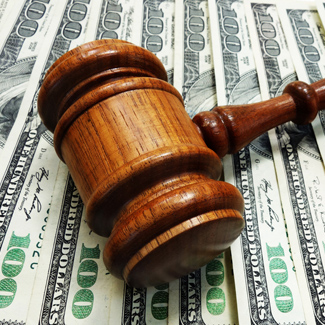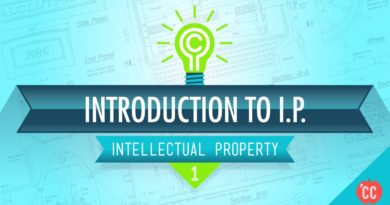CAFC vacates summary judgment ruling in third ParkerVision appeal for improper collateral estoppel analysis
“[T]he Federal Circuit clarified that findings underlying unpatentability decisions in IPR proceedings do not collaterally estop patentees from arguing the validity of separate but related claims in district court litigation.”
On Friday, September 5, the U.S. Court of Appeals for the Federal Circuit (CAFC) issued a precedential decision in ParkerVision, Inc. v. Qualcomm Inc. in a more than decade-long infringement battle over patent claims covering the conversion of electromagnetic signals. The Federal Circuit found that the Middle District of Florida erred in its application of collateral estoppel and abused its discretion in excluding expert testimony on validity offered by ParkerVision as unreliable, leading the appellate court to vacate the district court’s summary judgment ruling and remand for further proceedings.
After ParkerVision filed suit against Qualcomm back in 2011, the district court overturned the jury’s infringement verdict by granting judgment as a matter of law (JMOL) of non-infringement to Qualcomm. The Federal Circuit agreed with the district court, finding that ParkerVision’s expert on infringement gave conflicting testimony. ParkerVision sued Qualcomm again on related patents in 2014, and after Qualcomm challenged the validity of patent claims from that suit through inter partes review (IPR) proceedings at the Patent Trial and Appeal Board (PTAB), the Federal Circuit affirmed the PTAB’s findings that ParkerVision’s apparatus claims were invalid while ParkerVision’s method claims were not unpatentable.
Following the second Federal Circuit decision, the district court litigating ParkerVision’s second infringement suit granted a Daubert motion filed by Qualcomm to exclude expert testimony from ParkerVision. The reasons for the exclusion were collateral estoppel, which prevented ParkerVision from contradicting Board validity findings and unreliable evidence, as ParkerVision’s infringement experts did not conduct simulations and testing. Finding that Qualcomm’s expert testimony on non-infringement was unrebutted because of ParkerVision’s excluded testimony, the district court also granted Qualcomm’s summary judgment motion of non-infringement.
No Generating Limitation in 2014 Claims Creates Material Difference with 2011 Action
In this latest appellate decision, the Federal Court noted that the parties’ dispute on collateral estoppel centered on whether ParkerVision’s receiver claims in the 2014 suit, which cover the down-conversion of transmitted signals after they are received, were materially identical to the claims from the 2011 suit that led to non-infringement, which taught the down-conversion of signals at or after the circuit’s capacitor. While this issue was correctly identified by the district court, the district court did not undertake claim construction or consider intrinsic evidence from the claims themselves.
The district court erred in applying collateral estoppel by exclusively considering expert testimony without conducting claim construction, the Federal Circuit found. According to Phillips v. AWH Corp., (2005), intrinsic evidence is more important than extrinsic testimony. Here, the district court ignored claim construction. Qualcomm had argued that ParkerVision invited this error by not requesting claim construction, but the Federal Circuit noted that Qualcomm, the party moving for summary judgment, had the burden of proving that the issues litigated in the 2011 action and the 2014 action were identical.
The district court also erred in determining that Qualcomm’s expert testimony was unrebutted such that there was no material difference in the asserted patent claims, the Federal Circuit held. The appellate court noted, however, that ParkerVision’s expert in infringement did not directly compare 2011 and 2014 actions through claim charts. Instead, it noted that the expert testimony from 2014 action indicated the down-conversion occurred at a point within the circuit before the capacitor. While the accused products in the 2011 action and the 2014 action were identical, patent claims asserted in ParkerVision’s earlier action included a generating limitation requiring down-conversion at or after the capacitor.
Different Evidentiary Burdens Means No Estoppel Effect on Related Patent Claims
The Federal Circuit also found error in the district court’s decision to preclude ParkerVision’s expert testimony on validity. The Federal Circuit found that while Qualcomm argued that there was no final judgment on validity, excluding appellate jurisdiction, it was a matter for judicial economy that the district court be informed of the propriety of the exclusion of the issue that would have been litigated on remand. The appellate court stated that Qualcomm had not met the burden of proof required in district courts, as IPR petitioners who challenge validity only have to show invalidity by preponderance. While the Federal Circuit’s affirmance of invalidity findings by the PTAB create collateral estoppel, the appellate court here affirmed the PTAB’s finding that ParkerVision’s method claims were not unpatentable.
Finally, the Federal Circuit found that the district court abused its discretion in granting Qualcomm’s Daubert motion alleging that ParkerVision’s expert opinions had an unreliable basis. Federal Circuit cited its decision in Monsanto Co. V. David (2008) and noted that Federal Rule of Evidence 703 does not require that an expert have a personal perception of what the basis of an expert opinion is in order for it to be valid. While scientific literature reviewed by the district court indicated that accurate predictions of detailed circuit behavior require simulation, Qualcomm’s experts conceded that the schematics and technical documents reviewed by ParkerVision’s experts would allow evaluation of circuit operation to understand how the accused products work without simulation.
The Federal Circuit concluded this ruling by vacating the district court’s summary judgment of non-infringement and reversing its grant of Qualcomm’s Daubert motion on ParkerVision’s infringement and validity experts. The case was remanded for further proceedings consistent with the appellate court’s opinion.
Image Source: Deposit Photos
Image ID: 70164509
Author billperry
Steve Brachmann
Steve Brachmann graduated from the University at Buffalo School of Law in May 2022, earning his Juris Doctor. He served as the president of the Intellectual







